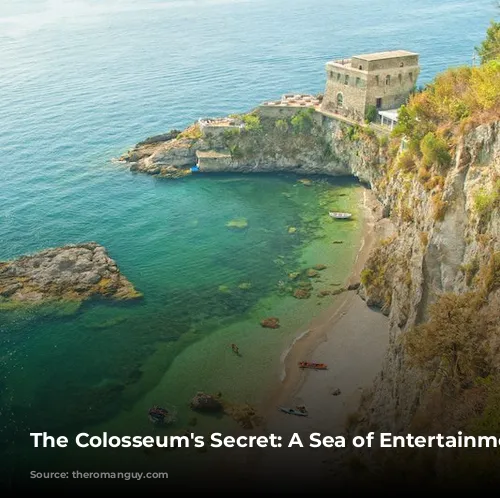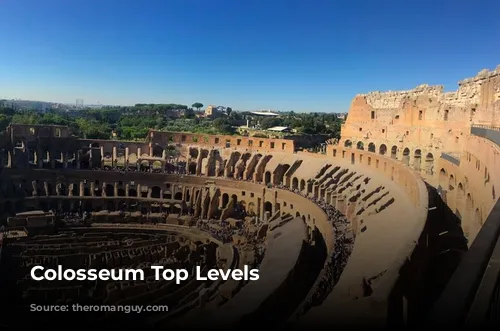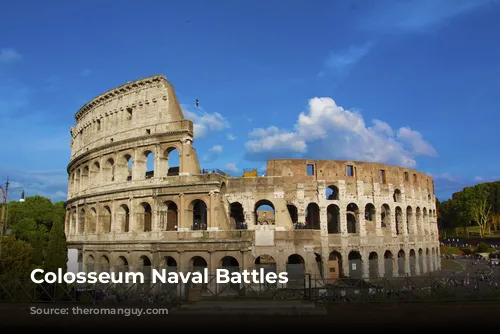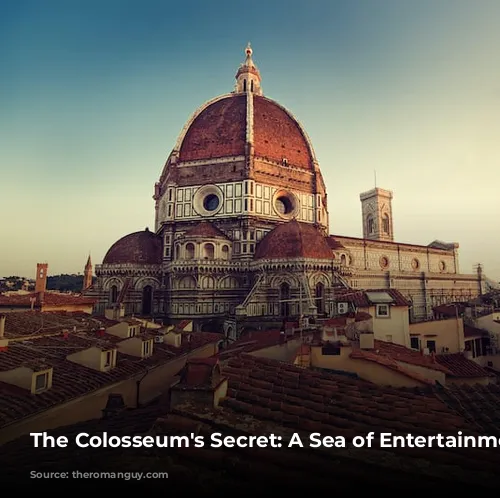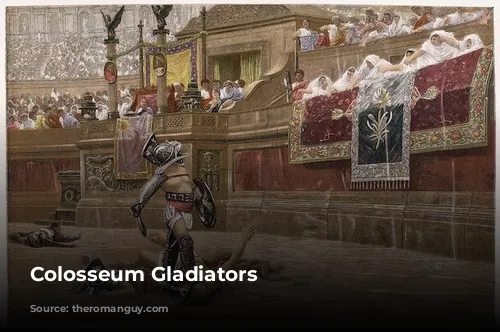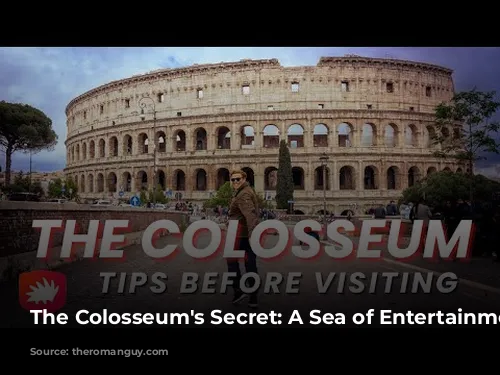The Colosseum stands as a testament to Roman ingenuity and their passion for entertainment. While the gladiator fights are often the first thing that comes to mind, the Romans also hosted spectacular naval battles within the arena’s walls. Imagine: a massive structure designed for combat transformed into a churning sea, a stage for epic clashes of ships!
This article delves into the intriguing history of these Colosseum naval battles, exploring how the Romans achieved this feat and why the tradition eventually faded.
A Sea of Blood: The Naumachiae
The Romans, known for their love of spectacles, often sought the most thrilling and dramatic forms of entertainment. Naumachiae, or staged naval battles, provided a unique spectacle that captivated the crowds.
These grand events originated in 46 B.C., a time when the Roman Empire was celebrating the triumphant return of Julius Caesar. To honor his victories, Caesar ordered the construction of a massive basin near the Tiber River. This artificial lake, measuring 1,800 feet long and 1,200 feet wide, hosted an epic sea battle that featured 12 Roman galleys and 3,000 participating warriors. The scale and grandeur of this first naumachia set the stage for future naval spectacles.
When the Colosseum was completed, the Romans couldn’t resist utilizing its immense space for a naumachia. The inauguration ceremony was marked by the arena being flooded, transforming it into a makeshift lake. Special flat-bottomed ships were employed to accommodate the shallow waters, and the battle recreated the historical clash between Athens and Syracuse. Even an artificial island was built in the middle of the arena, adding to the realism of the spectacle.
The Illusion of Battle: How It Worked
While the idea of flooding the Colosseum for a naval battle is impressive, historians believe that actual ship maneuvers may have been limited. The space was simply too small for realistic warfare. It is likely that props and visual effects were used to represent a larger scale battle.
The last documented Colosseum naumachia occurred in A.D. 89, orchestrated by Emperor Domitian. These grand events were expensive and difficult to stage, requiring a skilled team of engineers, craftsmen, and laborers. Finding a large enough space was a challenge, and the construction of elaborate sets and ships demanded significant resources.
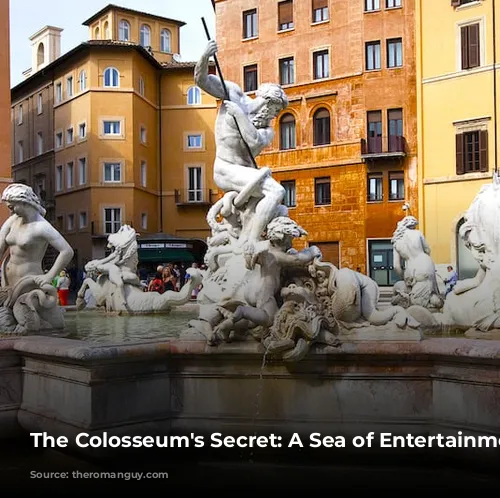
The Unsung Heroes: Naumachiaarii
In true Roman fashion, prisoners and condemned individuals were often used as combatants in these naumachiae. They were known as Naumachiaarii and often fought to the death, unless granted clemency by the emperor. Thousands of rowers also participated, contributing to the spectacle.
A Wet Mystery: Flooding the Colosseum
Flooding the vast Colosseum quickly, without losing the audience’s attention, would have been a logistical challenge even with modern equipment. How did the Romans achieve this feat?
Historians are divided on how the Colosseum was flooded, with some even questioning whether it ever happened. However, written accounts from the period support the idea of Colosseum naumachiae.
Cassius Dio, a Roman historian, described how Emperor Titus used the Colosseum as a water-filled arena, hosting animals trained to perform in water and staged ship battles.
Evidence suggests that during the Colosseum’s early years, before the construction of the hypogeum (the complex network of tunnels and chambers beneath the arena), flooding was possible. The hypogeum, built during Domitian’s reign, would have made flooding the arena impractical.
Fortunately, Verona’s amphitheater provides a clue to how the Colosseum could have been flooded. The Veronese arena has a basin connected to conduits, one drawing water from an aqueduct and the other draining it into a nearby river. A similar system could have existed in the Colosseum, allowing for rapid filling and emptying of the arena.
The Decline of the Naumachia
The popularity of arena-based naumachiae grew, as they were less costly than larger, lake-based spectacles. However, the reduced scale of the battles also led to a decline in grandeur. Roman audiences, accustomed to massive spectacles, became less interested in smaller, less impressive naval battles.
Adding to this decline was the weakening of the Roman Empire and the increasing financial burdens of the third century. The resources required for staging these grand spectacles were simply no longer available.
The Colosseum’s naval battles ultimately faded into history, leaving behind a fascinating glimpse into the Romans’ love of entertainment and their remarkable ingenuity in creating elaborate spectacles. While the actual details of flooding the arena remain shrouded in mystery, the accounts of these incredible events offer a vivid picture of Roman life and the sheer scale of their entertainment endeavors.
